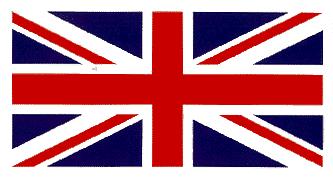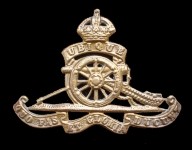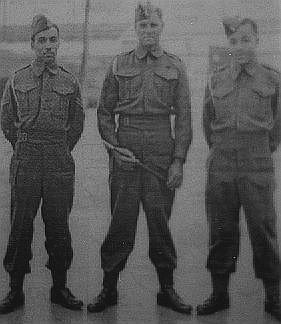THE BERMUDA MILITIA ARTILLERY
1895 - 1965



Also, the Admiralty could no more allow the US Navy the island as a base, than to lose it for itself.
Consequently, the Imperial Garrison at Bermuda, which included a full battalion of infantry, together with coastal artillery, engineering and other troops (and the Royal Navy's own guard of Marines at the Dockyard,) was only to be reduced, not removed, and that reduction could only be allowed by the creation of local Volunteer Army units, along the lines of those in Britain.
The War Office had long attempted fruitlessly to encourage the Colonial Assembly (Parliament,) to pass a Militia Act and to create militia forces. The colony had always done so, when left to its own devices, but since the build up of the Imperial Garrison had begun, along with the Dockyard, after the American War of Independence, the interest had waned. The last Militia Act had been pased specifically in response to the needs of the American War of 1812. Although the War Office had wanted a permanent Act, the Assembly had only passed a temporary one, and the Militia, as organized and funded under a Colonial Act, faded away soon after the War's end. Short-lived militias had, thereafter, been organized by the Governor, but these fell victim to the general apathy and disinterest of the population.
The War Office had made renewed efforts to induce the Colonial Assembly to form militias after the Crimean War, but had been steadfastly refused. The primary excuse given by the Colonial Assembly for their inaction was the delicate racial situation, which could only be aggravated by the raising of either a segregated or an integrated corps. Doubtless, the expectation that they would largelly, if not completely, fund whatever unit was created played into their reluctance, also.
The War Office decided to proceed circuitously, encouraging the creation of civil rifle clubs. These were supplied with Martini-Henry service rifles, direct from Government armouries. It was hoped that club-members would soon take the initiative of creating volunteer rifle units, and soon enough a group did approach the Colonial Assembly, seeking permission to form a Rifle Corps from club members. They were rebuffed, however, as resolutely as the War Office had been.
The War Office was not finally able to succeed in encouraging the Assembly until 1890. The previous year, the Colonial government, via the office of the Governor, had requested from the Secretary of State for the Colonies, permission to form a Joint Stock Company for the creation of a premier hotel to cater to the growing tourist industry. The Bermudians who were planning this hotel - which would be the Princess Hotel, on the outskirts of Hamilton - had arranged financial backing from a US company wich already had a related interest in the venture. The possession of land on the colony by foreigners was forbidden, under the Imperial defence consideration that this might be used to justify an invasion, such as had happened in Texas when the US had appropriatted that territory from Mexico. There was also a request made regarding the proposed widening of the shipping channel into Saint George's Harbour. This was necessary to maintain that town's economy, but could presumably have made the landing of invading troops easier by allowing easier ingress to the harbour to large vessels.
Seeing their chance, the War Office, when notified of these requests, insisted that neither of these requests could be allowed to diminish the security of the colony (or rather, 'base') while the Colonial Assembly was taking no part in the island's defence. They would be willing to reconsider the issues, however, they stated, should there be movement on the issue of militias.
With the colony's economy already having suffered severly at the loss of its ship-building and mercantile marine industries ( and privateering) and teetering along wholly on Imperial defence expenditure and a short-lived agricultural industry, the Assembly's hand was forced, and Acts were passed in 1892 authorixing the creation of the three units. The Bermuda Volunteer Rifle Corps was raised first, drawing on the already existing rifle clubs for membership. As it was desired to exclude Blacks from this unit, but not by any overt means, the entry to the Corps was hinged, at the outset, on membership in a civil rifle club. As all of these barred Black membership, the BVRC was kept a white unit.
The Bermuda Militia Artillery began enlistment in 1895. Although the ranks were recruited from the colony's Black population, commissions were restricted to Whites. The uniform worn was that of the Royal Artillery, without a distinctive cap badge.The first drill took place on the 15 June, 1896.
Initially, all of the coastal artillery batteries were manned by regular artillerymen. The BMA were gunners were slowly trained to proficiency in all roles within a battery.By the end of the decade, they were able to field gun teams, and began to take an increasing part of the Garrison's artillery role, though they remained a reserve to be mobilized in wartime, rather than replacing the regulars altogether. The last major revision and re-armament of the Garrison's coastal artillery was completed in 1910, leaving 22 pieces distributed through a number of the older forts and batteries, and one new battery on Saint David's head. This number began to dwindle almost immediately as the batteries were reduced, guns being relocated or moth-balled as necessary.
THE GREAT WAR,
1914 - 1918.
Coastal Artillery was already a dated concept by the start of the Great War. By then, the navies of the Great Powers were based on battleships with guns that dwarfed typical coastal artillery of the time. The Royal Navy's HMS Queen Elizabeth carried 15" guns which could fire a shell of 1,938 lbs. to a range of 16.25 miles. By comparison the 6" guns at St. David's could fling their shells a mere 6.25 miles. The reality was that naval vessels already had the advantage of maneouvre, and now could safely sit beyond the range of the coastal artillery and lay waste to them, and to the targets they were meant to protect, levelling the island with unanswerable and overwhelming fire.
Fortunately, the Central Powers lacked the naval strength to project a threat to the colony, and, after the Battle of Jutland, the German High Seas Fleet never attempted to challenge the Royal Navy's command of the Atlantic ( although the German Navy's submarines were somewhat more succesful in their attacks on Britain's oceanic commerce).
NEXT